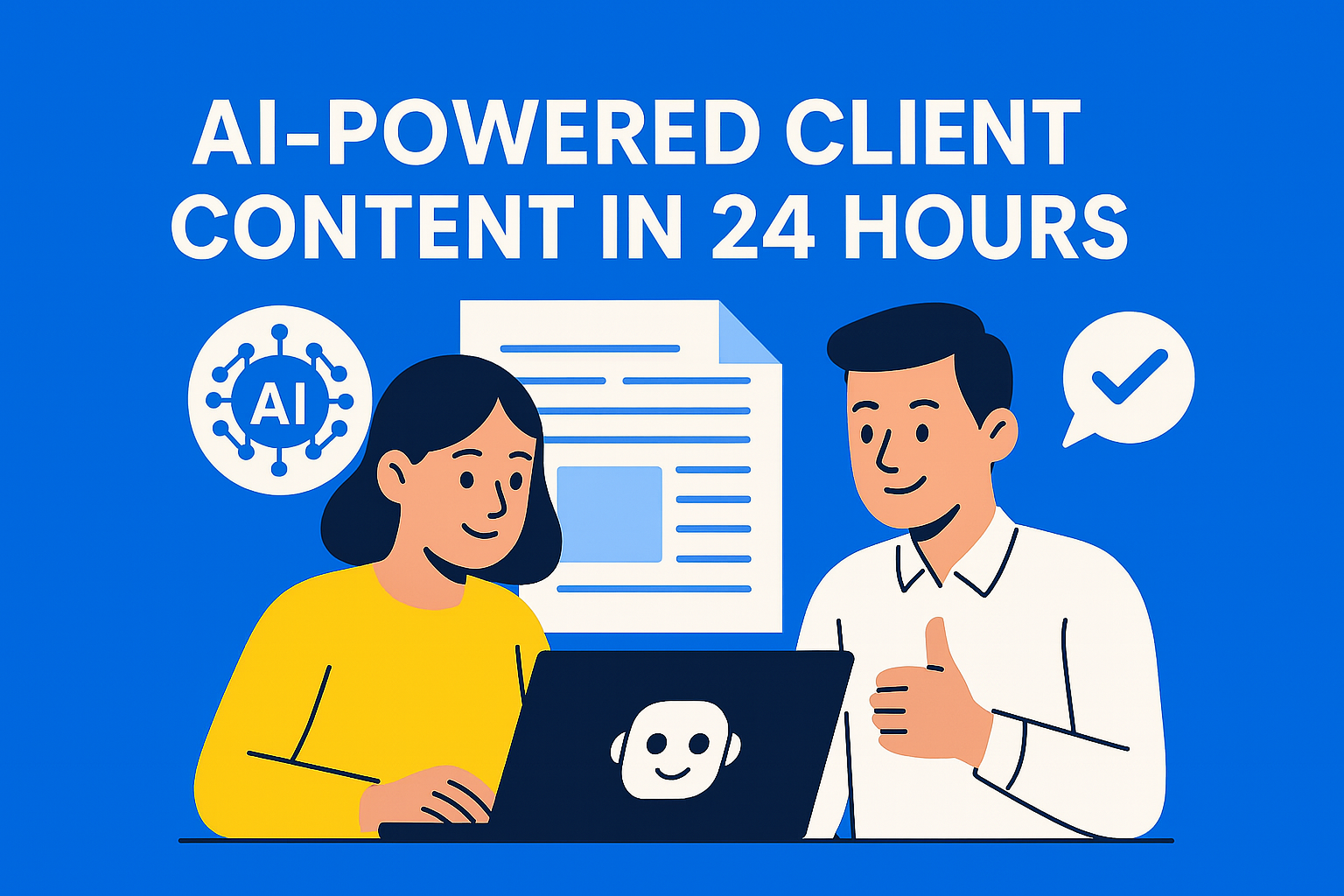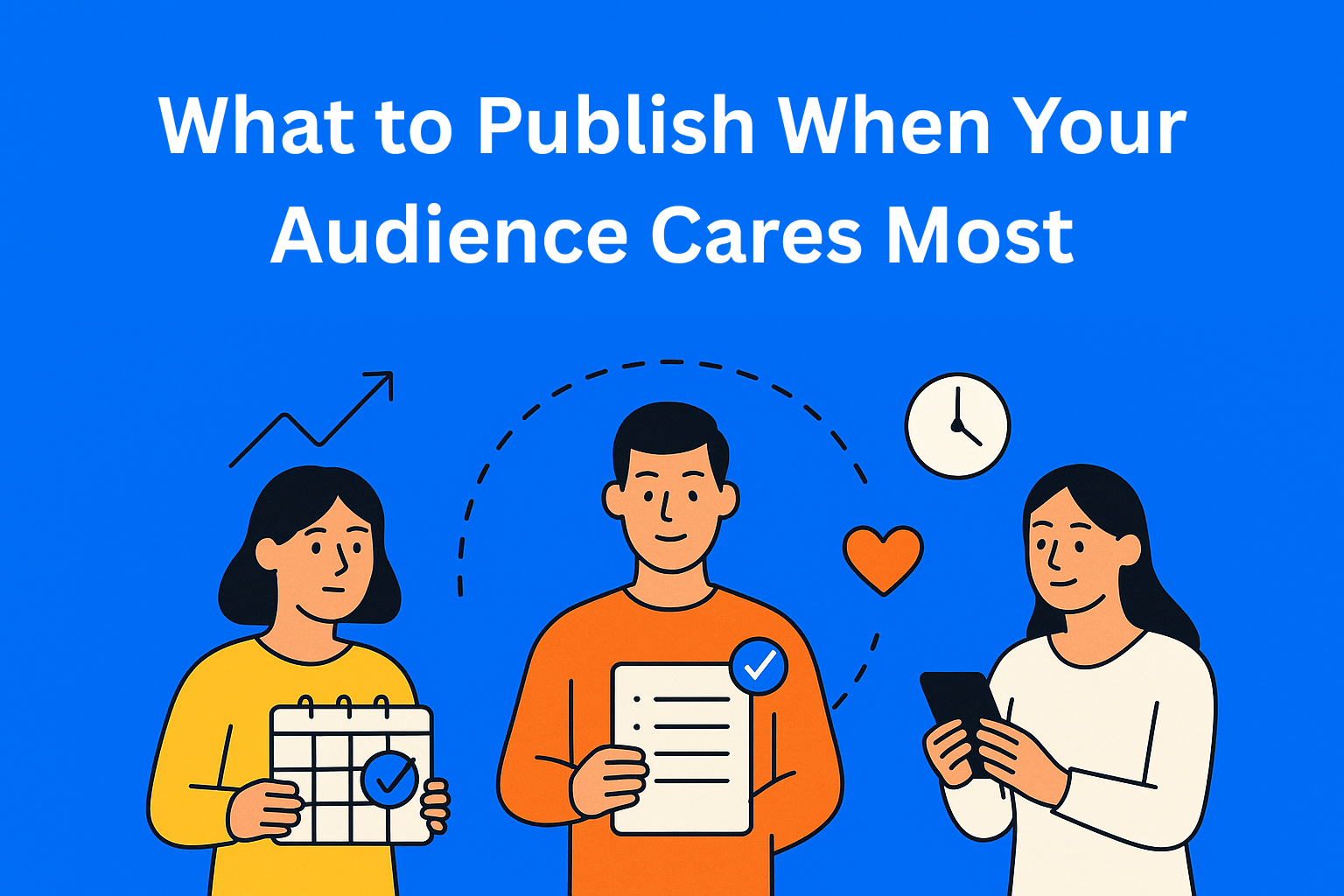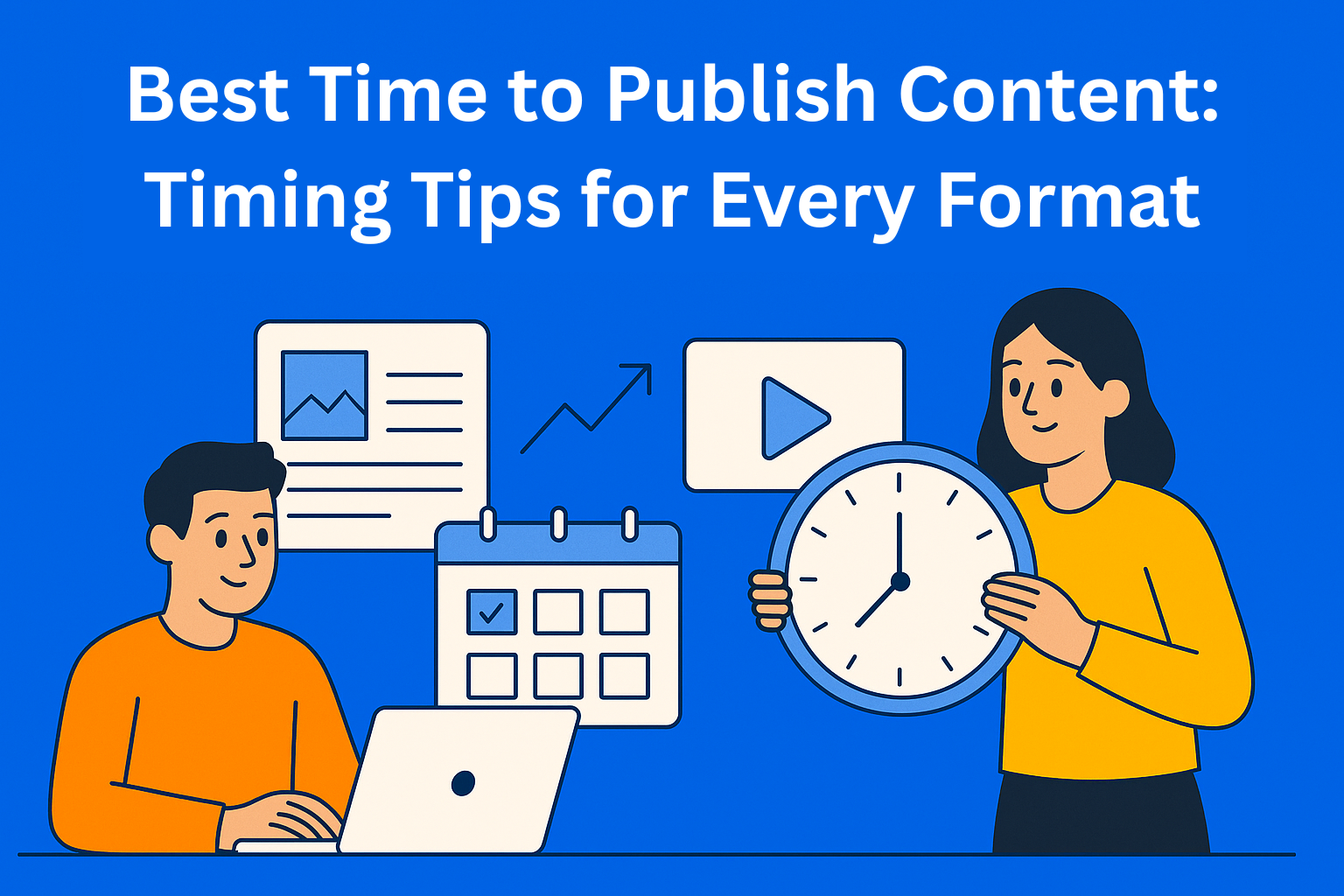Turning Around Client Content in 24 Hours - Thanks to AI
AI makes 24-hour content delivery possible, but is speed worth sacrificing quality? Discover the pros, cons, and how to balance fast turnarounds with content that truly works for your clients.

Today, when speed matters most, clients expect their content to be ready almost instantly. AI tools promise exactly that - creating blogs, articles, and posts in just a few seconds. Sounds like the perfect solution, right? But is it really that simple? Is a 24-hour deadline a real advantage or a hidden trap?
Key Takeaways
- Speed is tempting but risky - A 24-hour turnaround sounds great, but rushed content often lacks depth and originality.
- AI drafts ≠ finished product - AI is perfect for brainstorming and first drafts, but human editing ensures tone, style, and accuracy.
- Quality builds trust - Quick delivery means nothing if the client keeps asking for revisions.
- Set realistic expectations - Explain to clients that great content is an investment, not a race.
- Balance is key - Use AI for speed, humans for creativity and brand alignment.
Why Speed Seems Attractive
Let’s be honest: in digital marketing, time is precious. Delivering content fast can make a strong impression, especially on new clients. When you say you’ll finish everything in 24 hours, it sounds like you’re willing to move mountains. AI helps here because it can generate a draft in just a few seconds.
Another big plus is flexibility. When a last-minute request pops up, AI can be a lifesaver - especially if your team is busy. This could mean a happy client and more work in the future.
Where Problems Start
Speed is great, but don’t forget about quality. If AI can create a text in an instant, how likely is it that the content is fully on-brand, has an original point of view, and is error-free? Honestly, not very likely.
AI is amazing for generating ideas, but it still struggles with nuance. Brand voice, tone, and audience-specific needs are details that machines often miss. And what happens then? The client sees a generic piece, realizes it doesn’t match what they wanted, and starts losing trust.
How to Tell When Speed Hurts Quality
If the content sounds robotic or shallow, that’s a big red flag. Here’s what to check:
- Do you see repeated sentences or phrases? If yes, mix it up.
- Is the text full of valuable details, or does it feel empty? Add examples and practical tips.
- Does the content match the brand tone and speak directly to the target audience? If not, adjust the style.
Pro tip: If the client keeps asking for revisions, it’s a clear sign that speed is hurting quality. In that case, take more time for research and editing, even if it means pushing the deadline a bit.
Balancing Speed and Quality
The solution isn’t to ditch AI completely. Use it as a tool, not the entire solution. Let AI create the first draft, but have a human copywriter refine it, adjust the tone, and add creativity.
Also, set realistic expectations with clients. Explain that quality content is an investment that takes time. Speed is tempting, but strong client relationships are built on trust and results - not on how fast you can deliver a piece.
Conclusion
Speed can be an advantage, but only if it doesn’t compromise quality. AI is a great partner for brainstorming and speeding up processes, but it’s not a substitute for the human touch. At the end of the day, clients want content that works, not just content that’s finished quickly.
So next time you promise a 24-hour turnaround, ask yourself: is this really in the client’s best interest?






